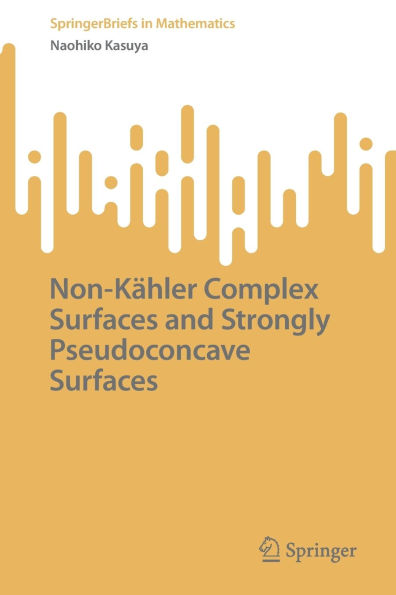Non-Kähler Complex Surfaces and Strongly Pseudoconcave Surfaces
The main themes of this book are non-Kähler complex surfaces and strongly pseudoconcave complex surfaces. Though there are several notable examples of compact non-Kähler surfaces, including Hopf surfaces, Kodaira surfaces, and Inoue surfaces, these subjects have been regarded as secondary to Kähler manifolds and strongly pseudoconvex manifolds. Recently, however, the existence of uncountably many non-Kähler complex structures on the 4-dimensional Euclidean space has been shown by Di Scala, Kasuya, and Zuddas through their construction. Furthermore, Kasuya and Zuddas' handlebody construction reveals that strongly pseudoconcave surfaces have flexibility with respect to both four-dimensional topology and boundary contact structures. These constructions are based on the knowledge of differential topology and contact geometry, and provide examples of fruitful applications of these areas to complex geometry. Thus, for (especially non-compact) non-Kähler complex surfaces and strongly pseudoconcave complex surfaces, it is not an exaggeration to say that the research is still in its infancy, with numerous areas yet to be explored and expected to develop in the future.
1146744573
Non-Kähler Complex Surfaces and Strongly Pseudoconcave Surfaces
The main themes of this book are non-Kähler complex surfaces and strongly pseudoconcave complex surfaces. Though there are several notable examples of compact non-Kähler surfaces, including Hopf surfaces, Kodaira surfaces, and Inoue surfaces, these subjects have been regarded as secondary to Kähler manifolds and strongly pseudoconvex manifolds. Recently, however, the existence of uncountably many non-Kähler complex structures on the 4-dimensional Euclidean space has been shown by Di Scala, Kasuya, and Zuddas through their construction. Furthermore, Kasuya and Zuddas' handlebody construction reveals that strongly pseudoconcave surfaces have flexibility with respect to both four-dimensional topology and boundary contact structures. These constructions are based on the knowledge of differential topology and contact geometry, and provide examples of fruitful applications of these areas to complex geometry. Thus, for (especially non-compact) non-Kähler complex surfaces and strongly pseudoconcave complex surfaces, it is not an exaggeration to say that the research is still in its infancy, with numerous areas yet to be explored and expected to develop in the future.
54.99
In Stock
5
1

Non-Kähler Complex Surfaces and Strongly Pseudoconcave Surfaces
121
Non-Kähler Complex Surfaces and Strongly Pseudoconcave Surfaces
121
54.99
In Stock

Product Details
| ISBN-13: | 9789819630011 |
|---|---|
| Publisher: | Springer Nature Singapore |
| Publication date: | 03/15/2025 |
| Series: | SpringerBriefs in Mathematics |
| Pages: | 121 |
| Product dimensions: | 6.10(w) x 9.25(h) x (d) |
About the Author
From the B&N Reads Blog
